How to Cook Farro
Published Apr 22, 2022
Learn how to cook farro for any recipe type to add more protein and fiber to the meal. This tutorial will teach you how to cook this ancient whole-wheat grain perfectly
This post may contain affiliate links. Please read our disclosure policy.
Learn how to cook farro and add this very ancient grain into your totally modern diet. Farro is a protein-rich food perfect for vegans, is so tasty in any type of grain bowl, and works well as a make-ahead component of meal prep. Don’t be intimidated by cooking farro. It’s as easy as cooking pasta or rice and will usually come with package cooking instructions.
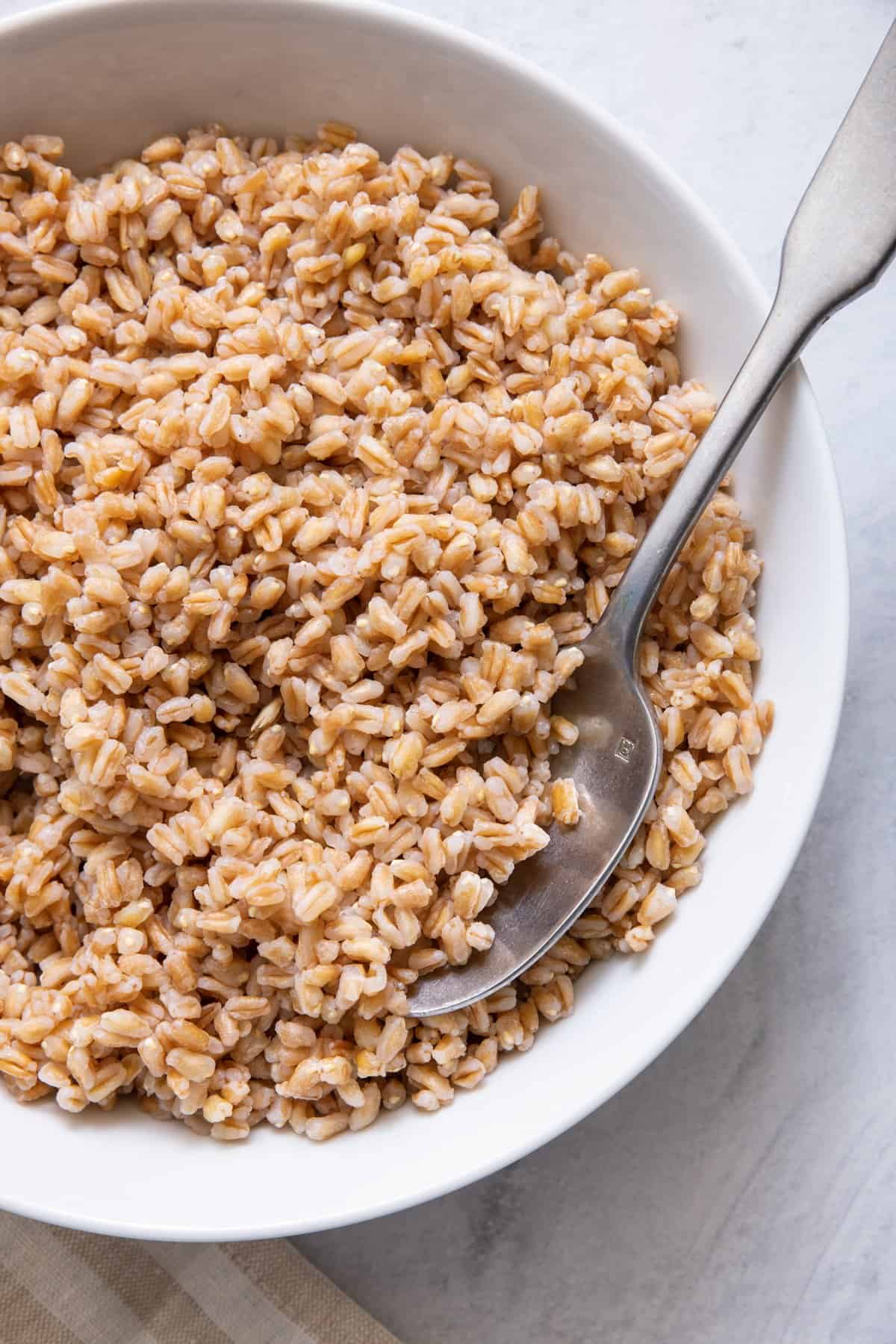
Farro is showing up in all kinds of recipes and menus, because of its nutritional punch and versatility for omnivores, the gluten-sensitive and vegans.
what is farro?
Farro (sometimes called emmer) is a whole grain wheat that has a high amount of protein and high amount of fiber. It looks a little like brown rice but has a more assertive, nutty flavor and a firm bite. It also looks like barley, and is often interchangeable in recipes.
types of farro
There are three different types of farro. Their labels – pearled, semi-pearled, or plain farro – indicate whether or not the grain has been stripped (pearled) of its outer layer of bran. But the best indicator of the type may be the cooking time.
- Pearled farro, used here, has all the bran removed and cooks the fastest (10 minutes to 20 minutes.) Even without its outer layer, farro still retains a lot of its nutrition.
- Semi-Pearled has some of the bran removed. Cooking times vary but are usually around 30 minutes.
- Whole grain Farro or just Farro means the bran is intact. It may take up to an hour to cook, so I recommend soaking it before cooking.
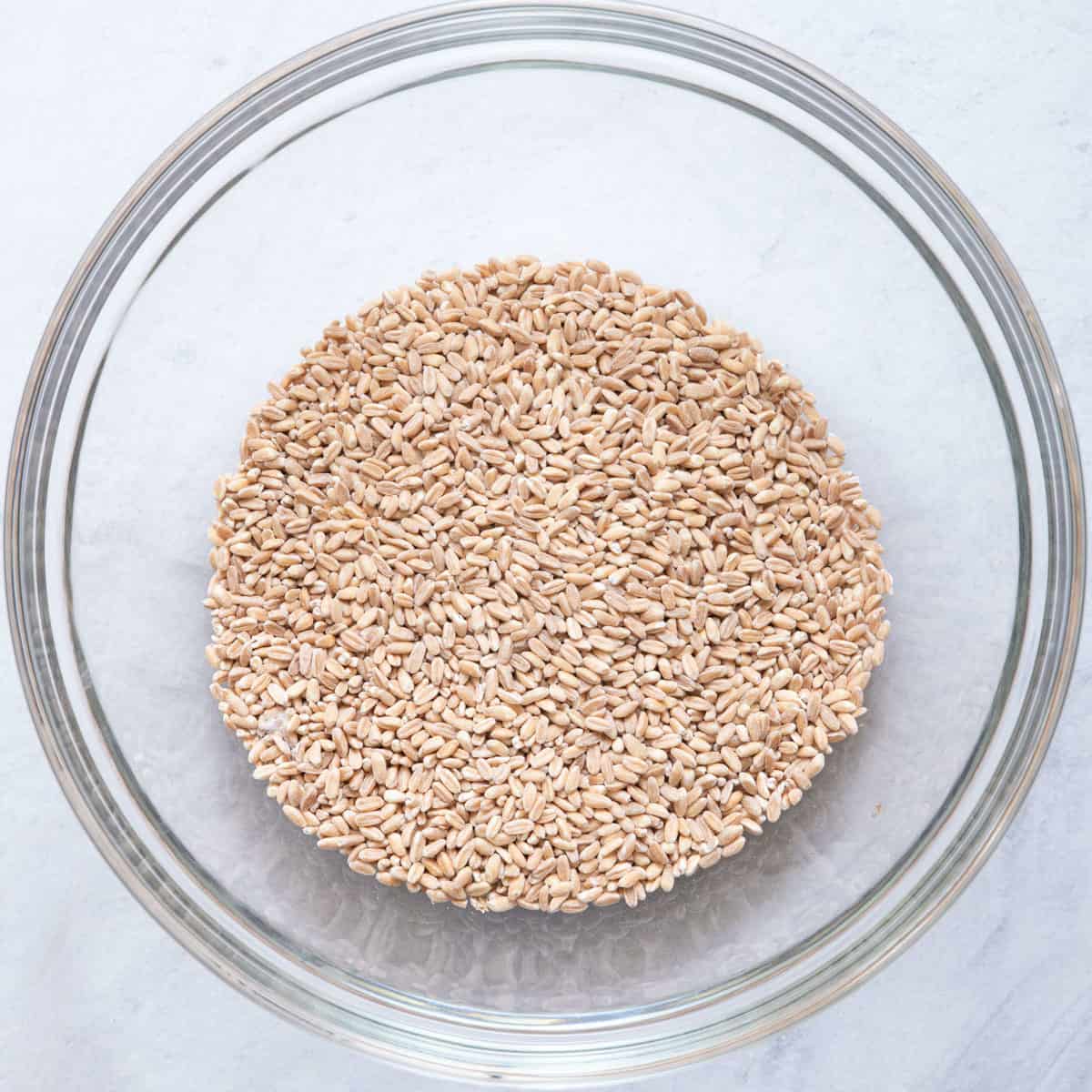
WHY learn to cook farro
- This grain brings all the nutrition. Farro comes loaded with fiber – 25% of a day’s requirement in just ¼ cup. It’s high in protein and low in fat
- It works for some with gluten issues. The gluten in farro is of a simpler type than the modern wheat found in bread and pasta and is tolerated by some gluten-sensitive people.
- It adds interest to recipes. A full flavor and nice texture make farro a versatile ingredient. In salads, farro is a solid-feeling grain, it makes a filling side, and is the main ingredient in baked dishes, risottos, or even as a breakfast grain.
HOW TO cook farro – step-by-step
- First, measure out your farro. Pick out any obvious odd bits or small pebbles.
- Using a fine-mesh sieve, rinse farro under cold water. Swish around until the water runs clear.
- After bringing a small saucepan of heavily salted water to boil over medium heat, add the farro.
- Bring to a boil again, then reduce the heat to medium-low, and then cover the saucepan.
- Stir the farro every few minutes until tender. The cooked grain will still have a slight chew to it, similar to al dente pasta
- When done, drain the pasta but do not rinse. Allow to cool if using in a salad or enjoy it warm with a protein or vegetable of choice.
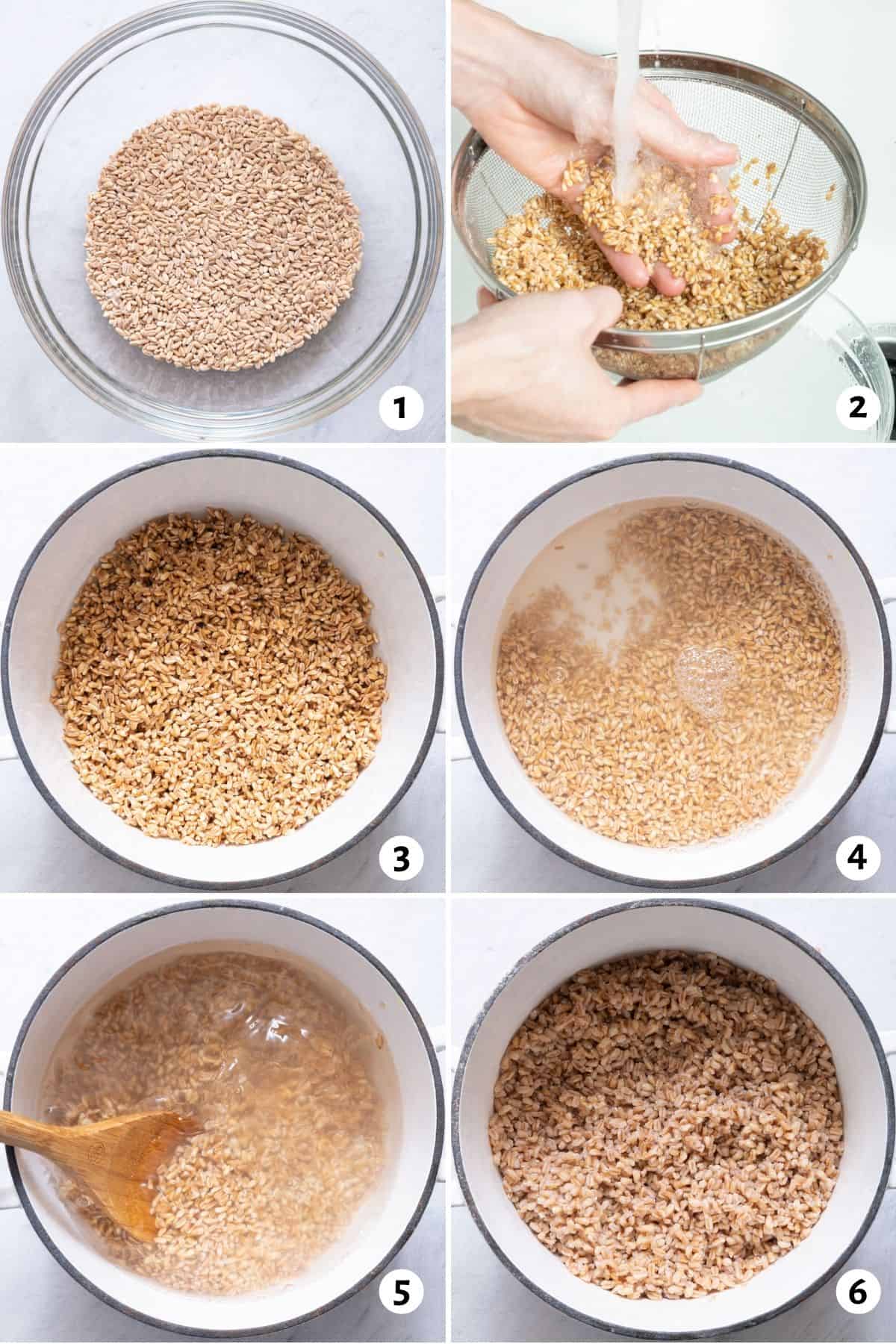
TIPS FOR cooking farro
- Pay attention to the type of farro you buy. This recipe is for pearled farro. For other varieties, cooking time will be longer. Try to read the back of the package or any labeling on bulk shelves to help you determine the cooking time if needed.
- Add aromatics or stock. Simmer in with aromatics like bay leaves or garlic, or vegetable or chicken stock for boasted flavor or added protein.
- Presoak for even quicker cooking. Like dried beans, whole wheat farro can benefit from an overnight soak in cold water prior to cooking. Even the pearled type here can benefit from 30 minutes of soaking.
- Taste for doneness. Farro does not expand as much as rice or pasta when cooked. Tasting is a better indication of doneness. Farro should be tender but with some tooth still to it.
- Add salt. Unless dietary restrictions prevent it, do not stint on the salt at the beginning of cooking. This seasons the farro as it cooks, which is more effective than salting at the end.
recipes to make with farro
HOW TO REHEAT & STORE farro
First, if farro is destined for a salad, spoon the hot farro onto a sheet pan to cool and dry out for an hour or so before storing in a tightly lidded container.
For farro destined for a side dish, store in a tightly lidded container in the fridge. You can reheat in the microwave or stove using some water or broth to moisten.
HOW LONG WILL farro LAST IN THE FRIDGE?
In a tightly lidded container, farro is good for four days in the refrigerator.
CAN I FREEZE farro?
Uncooked farro will last for a year in the freezer. Cooked farro can be stored in sealed containers for up to three months. Let defrost overnight in the fridge and then reheat as above.
FREQUENTLY ASKED QUESTIONS
Farro is considered a good substitute for barley in cooked recipes like soups but also in salads. You will also find cooks using it instead of rice in risottos and even like pasta sometimes.
Like rice pilaf, you can toast the grains before cooking to boost the flavor. Let the rinsed grains dry, then before adding water to your cooking pot, toast the grains in the dry pot over medium heat until they smell toasty. Transfer to a plate and continue with recipe.
Farro can be cooked in the Instant Pot for about the same time it takes on the stovetop, but it is hands-off. Use 3 cups of water for every 1 cup of pearled farro and start at 7 minutes. Add more time if needed.
No! Farro, aka emmer, is not the same thing as spelt, which is a cousin in the wheat family but a different grain altogether. Unfortunately, some Italian packaging may use farro and spelt interchangeably. Look for the Latin name Triticum Dicoccum (farro) and not Triticum Spelta (spelt.)
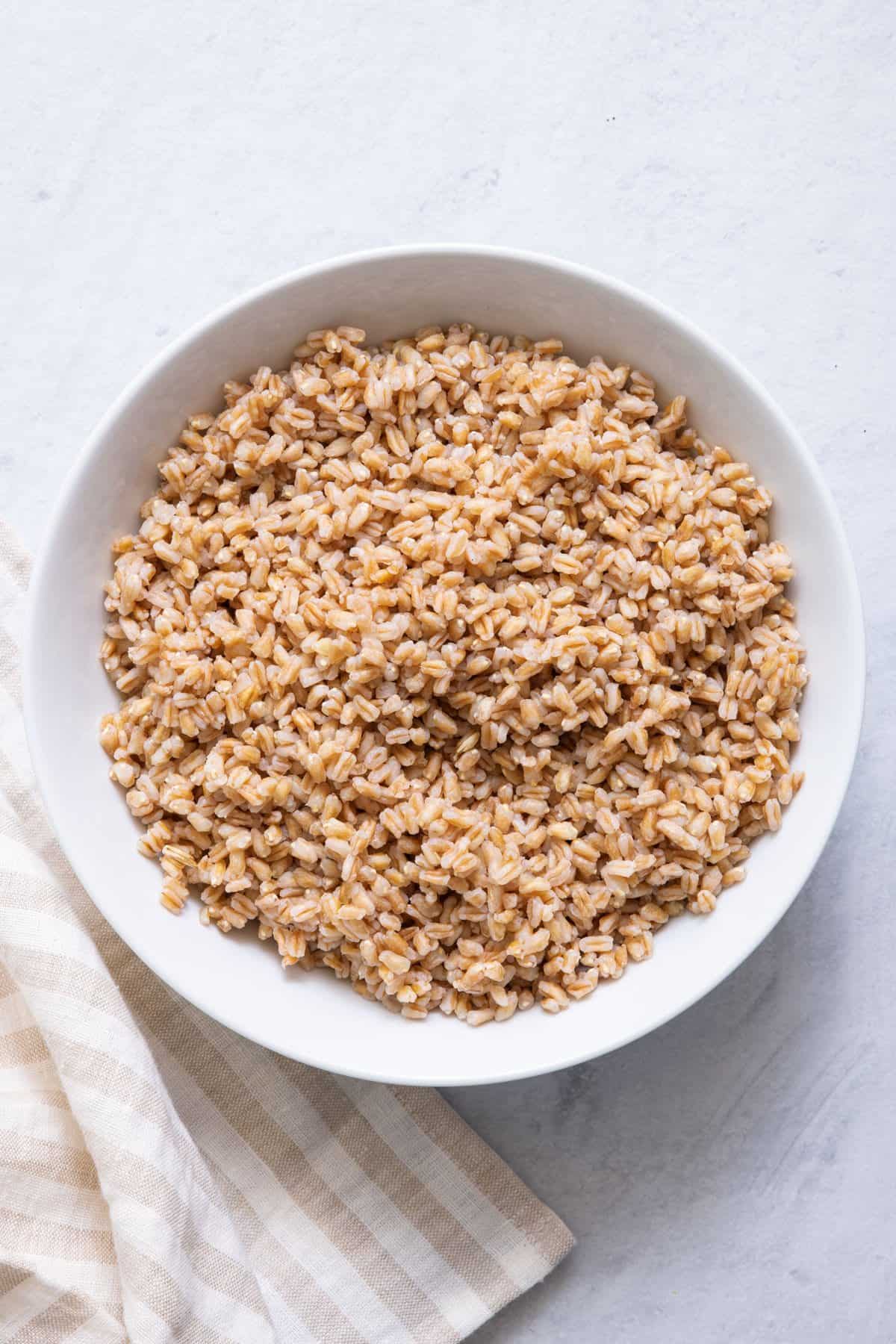
Cooking farro is an easy technique that’s similar to cooking pasta. Essentially you’ll cover the farro in salted boiling water and drain out any excess water after cooking. So, it’s hard to mess up cooking this ancient grain. I hope this tutorial will help you cook farro perfectly every time!
MORE cooking tutorials:
- How to Cook Rice
- How to Cook Brown Rice
- How to Cook Quinoa
- How to Cook Pasta
- How to Cook Couscous
- How to Cook Lentils
- How to Cook Basmati Rice
If you found this tutorial for How to Cook Farro helpful or if you try any recipe on Feel Good Foodie, then don’t forget to rate the recipe and leave a comment below! It helps others who are thinking of trying out this tutorial and we would love to hear about your experience. And if you snapped some shots, share it on Instagram so we can repost on Stories!
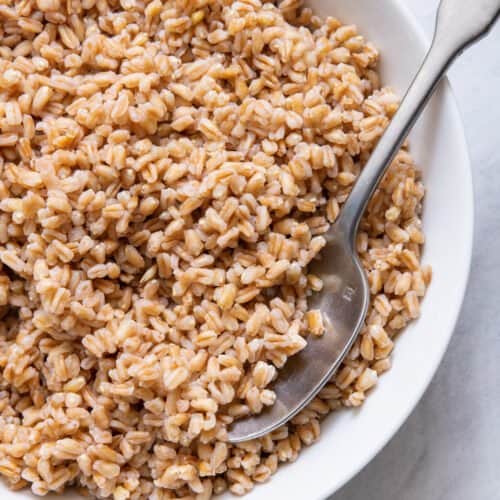
How to Cook Farro
Ingredients
- 1 cup farro pearled
Instructions
- Place the farro into a fine-meshed sieve and rinse under cold running water for about 30 seconds, swishing with one hand until the water runs clear. Drain.
- Bring a small pot of heavily salted water to a boil over medium-high heat. Add the farro and return the water to a boil, then lower the heat to medium-low and cover.
- Simmer the farro, stirring occasionally, until tender, 15-20 minutes. The cooked grain will still have a slight chew to it, similar to al dente pasta.
- Drain the farro, but do not rinse. Allow to cool if using in a salad or enjoy it warm with a protein and vegetable of choice.
Notes
Nutrition
Nutrition information provided is an estimate. It will vary based on cooking method and specific ingredients used.





